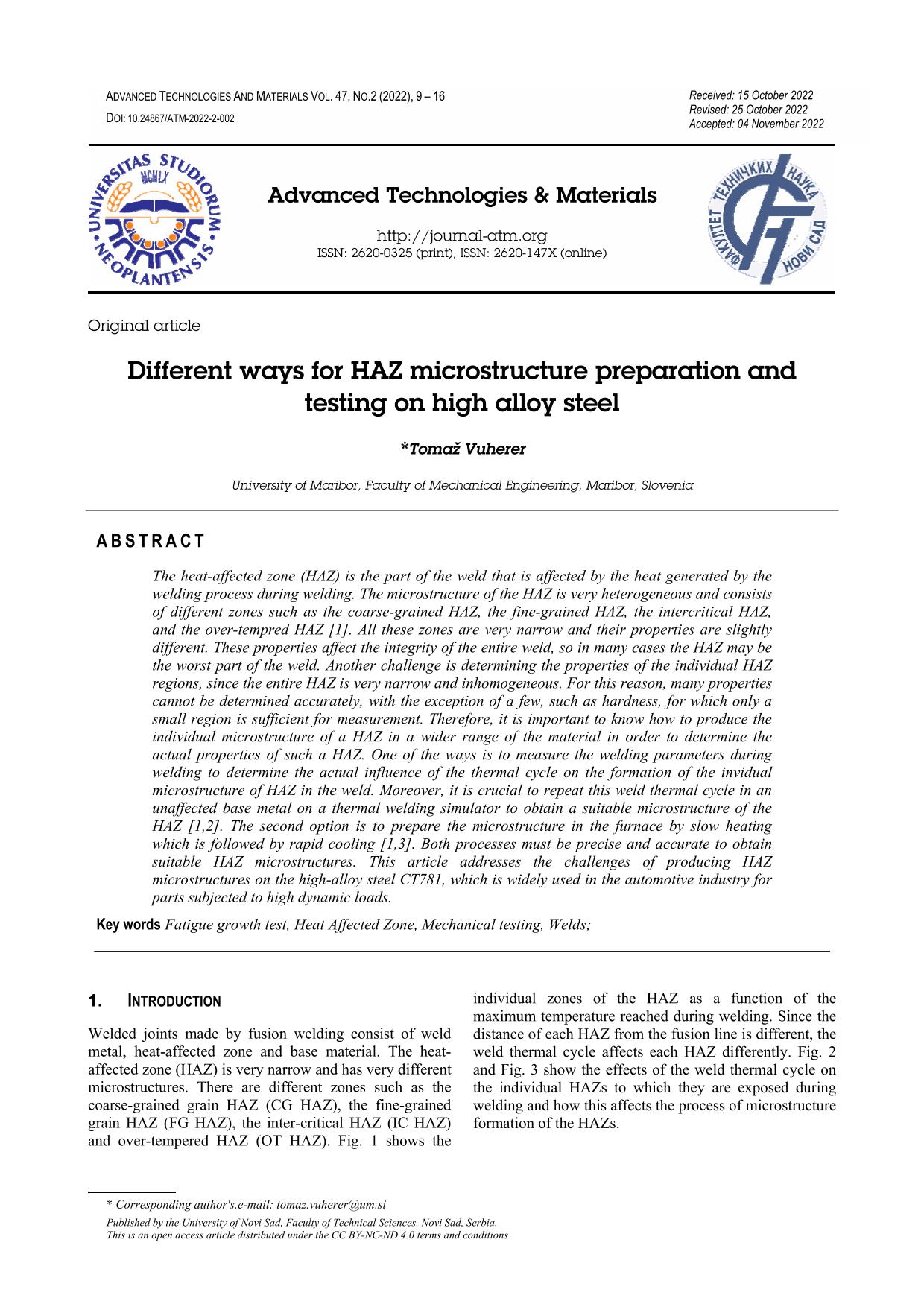Different ways for HAZ microstructure preparation and testing on high alloy steel

Published 2022-12-20
abstract views: 37 // Full text article (PDF): 16
Keywords
- Fatigue growth test,
- Heat Affected Zone,
- Mechanical testing,
- Welds
How to Cite

This work is licensed under a Creative Commons Attribution 4.0 International License.
Abstract
The heat-affected zone (HAZ) is the part of the weld that is affected by the heat generated by the welding process during welding. The microstructure of the HAZ is very heterogeneous and consists of different zones such as the coarse-grained HAZ, the fine-grained HAZ, the intercritical HAZ, and the over-tempred HAZ [1]. All these zones are very narrow and their properties are slightly different. These properties affect the integrity of the entire weld, so in many cases the HAZ may be the worst part of the weld. Another challenge is determining the properties of the individual HAZ regions, since the entire HAZ is very narrow and inhomogeneous. For this reason, many properties cannot be determined accurately, with the exception of a few, such as hardness, for which only a small region is sufficient for measurement. Therefore, it is important to know how to produce the individual microstructure of a HAZ in a wider range of the material in order to determine the actual properties of such a HAZ. One of the ways is to measure the welding parameters during welding to determine the actual influence of the thermal cycle on the formation of the invidual microstructure of HAZ in the weld. Moreover, it is crucial to repeat this weld thermal cycle in an unaffected base metal on a thermal welding simulator to obtain a suitable microstructure of the HAZ [1,2]. The second option is to prepare the microstructure in the furnace by slow heating which is followed by rapid cooling [1,3]. Both processes must be precise and accurate to obtain suitable HAZ microstructures. This article addresses the challenges of producing HAZ microstructures on the high-alloy steel CT781, which is widely used in the automotive industry for parts subjected to high dynamic loads.

